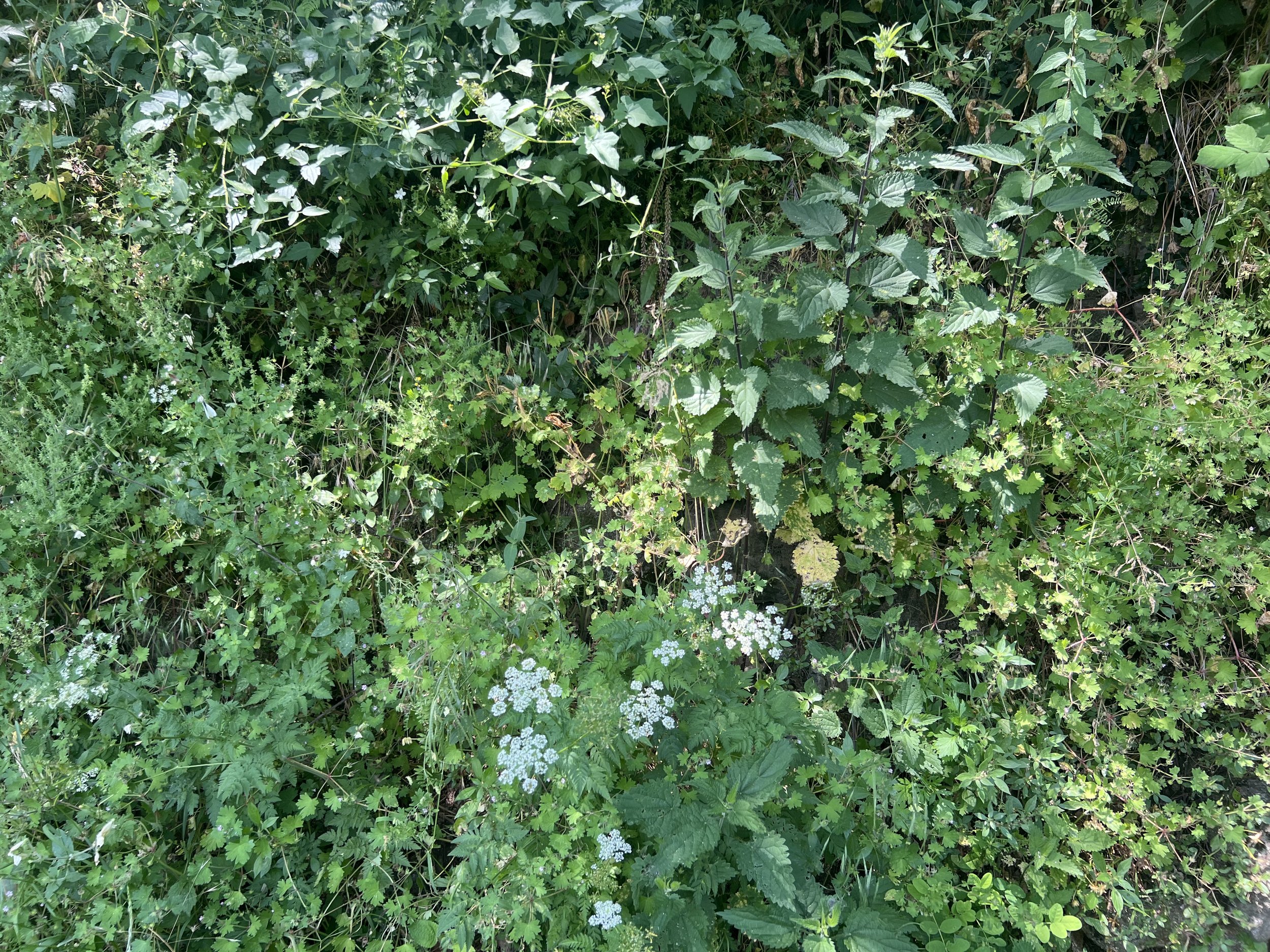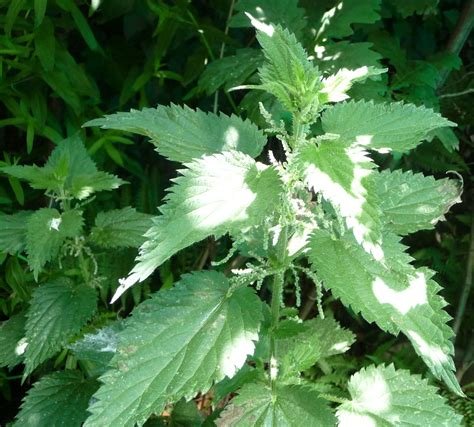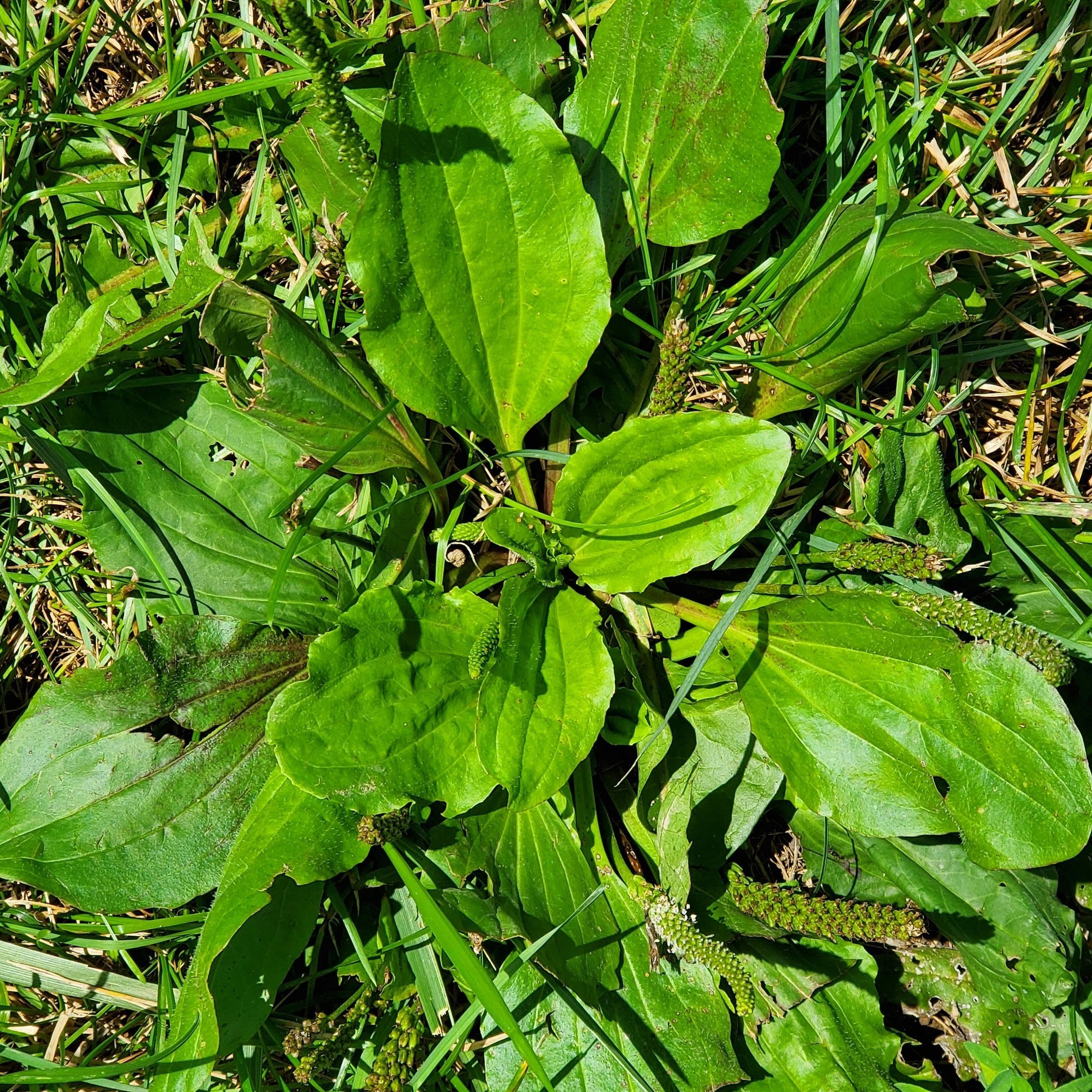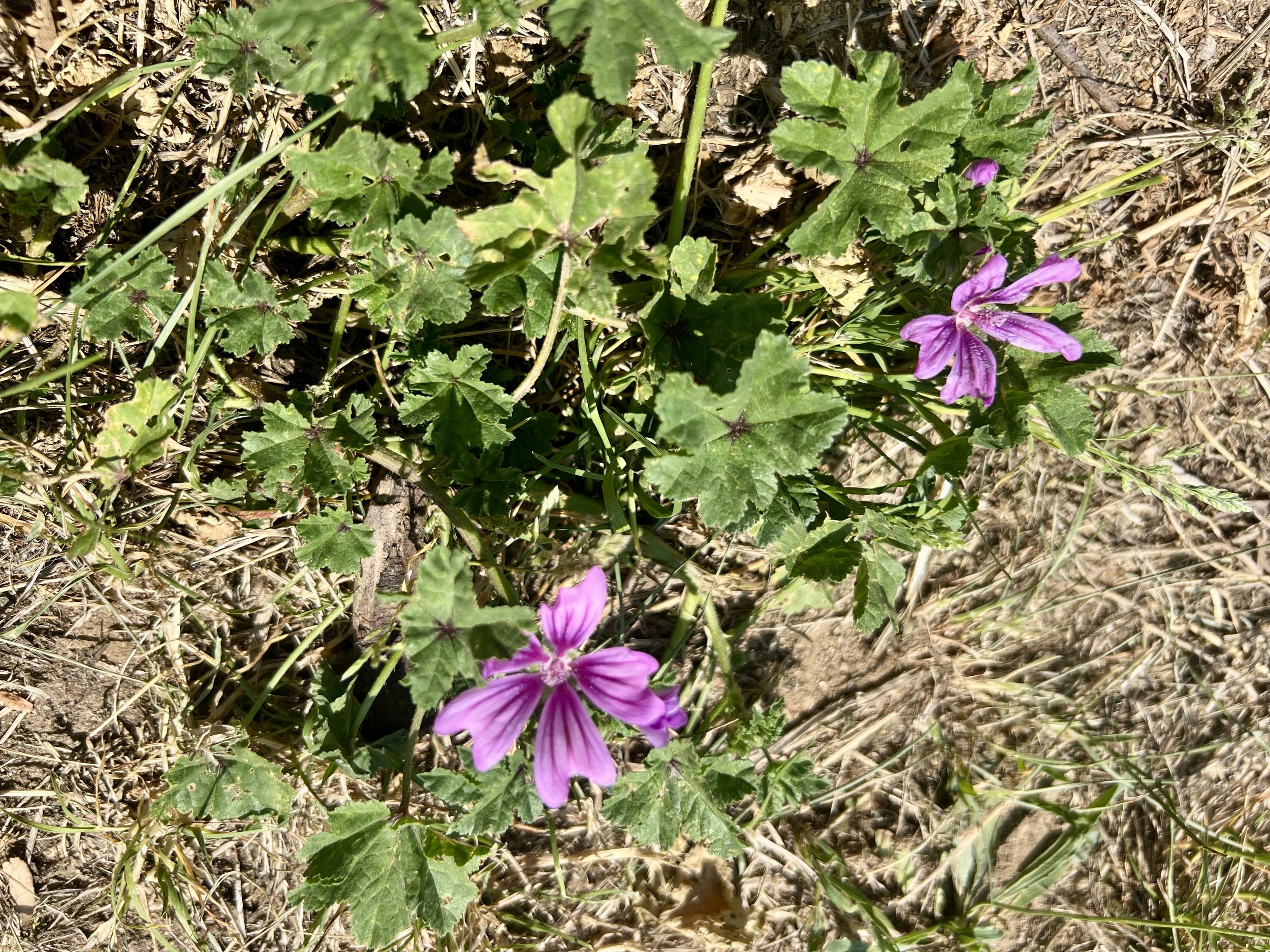La Taillede Herb Walk
It’s no secret that La Taillede is nestled in and surrounded by stunning lush landscape, but did you know that within the forest you can find helpful plants to forage for? Right within walking distance of the gites (and oftentimes even right outside your door) you can find the perfect blend of herbs to add to a morning or evening cup of tea.
If you’re curious about which herbs you can find here at La Taillede, you’ll find a few of our favourites below. Before we get started, there are a few important logistics to note. Wild herbs can affect everyone differently, so be mindful when foraging and consuming plants! You will be foraging and consuming wild plants at your own risk. Be sure you have correctly identified the plant and only consume a small amount to start so you can see how your body reacts to the herb. Finally, none of the information that is offered here is intended as medical advice, just as an offering of what herbal fun is wildly available here at La Taillede.
Questions to ask ourselves before harvesting wild plants:
Will I use the plant material I harvest?
How will I use it?
What is my intention for harvesting this generous plant?
It may seem silly, but it’s also important to ask permission before harvesting wild plants from the Earth. It helps to ensure we have the right intentions when harvesting/using the plants and that there is a mutual respect for the Earth and the food that she provides us. If we don’t have a good gut feeling about harvesting from a particular spot in the forest, that might mean that the plant has just been harvested by someone else and we don’t want to over-harvest or take too much. It could also mean the plant is dying back, is fatigued from drought, or that there is a more abundant source of plants somewhere else. By asking ourselves these questions and being in connection with the land that we harvest from, we can be sure that we are not over-extending the land or affecting the plant’s future growth. We want the plant to be strong enough to provide for the following season.
A final tip: for tea-making, don’t use boiling water. 80-90*C is ideal. Hotter than that can destroy many of the beneficial elements of the tea you’re trying to make.
Alright! Now that we have the logistics out of the way, let’s get started and see what’s out there.
St. John’s Wort
A classic summertime herb (known as the “sunshine” herb), St. John’s Wort begins to bloom right around the summer solstice (June 21-23) or St. Jean Baptiste Day (June 24) - hence the name! Unlike many other herbs, this plant is most potent in tea when used fresh rather than dry. Those who are on prescription medications like antidepressants are advised not to take St. John’s Wort.
Potential Benefits:
May promote happiness and reduce anxiety
May regulate hormonal balance
May help to reset internal clock, helping with sleeplessness and fatigue
Characteristics:
Reddish woody stem base
Flowers have five distinct petals with rose-like stamen
Buds or new flowers have reddish tint
Tiny pinhole dots (tiny oil glands) on leaves as well as on petals.
Harvesting:
Choose a sunny, dry day to harvest
Squeeze the buds and flowers to see if a reddish or deep purple oil exists, that means it’s time to harvest.
Take as little amount of the plant material as possible. Grab the plant below the sunray of flowers and cut just below your fist.
Yarrow
Named after Achilles, this plant is best known as the wound healer for its incredible healing properties for scrapes and bruises. It’s also a powerful helper for colds and flus and can aid in circulating blood (helpful for blood clots) while also clotting blood externally (in cuts). Popularly used for menstrual aches and digestive disturbances as well, there’s very little this potent plant can’t help with!
Potential Benefits:
Can be used topically for cuts and wounds to help clot bleeding
Can help to break fevers
Can be used as a digestive stimulant/bitter
Characteristics:
Stiff green stems
Feathery leaves alternately running up the stalk
Soft floral/bitter scent
Harvesting:
This plant can be quite invasive, so you can harvest liberally!
Harvest both the flowers and leaves for tea
Harvest leaves for cuts and poultice
Mugwort
Named after the Greek deity Artemisia for its wild nature of the moon, this dreamy herb is best known for its usages in helping to promote a dreamlike state or even lucid dreaming. You can use it in a “dream pillow” with dried herbs, as a burn/smoke bundle, or just hung up above your bed to help promote a better sleep. Not to worry if you’re not looking for a sleep aid; as a tea, it has plenty of additional benefits too.
Potential Benefits:
Can be used in cooking as a digestive aid or remedy for stagnant digestive issues
May help with delayed menses, intense menstrual cramps, or excessive bleeding
May increase circulation and soothe muscles
Characteristics:
They have a dark green leaf with a silvery underside (like the moon)
Tall, can grow up to 1-2 metres
When it flowers: has small flowers that are oval-shaped in reddish yellow clusters
Harvesting:
This plant can be quite invasive, so you can harvest liberally!
Harvest both the flowers and leaves for tea
Harvest with intention for physical or spiritual uses
Mullein
If you’re ever left in the woods and in need of a bathroom break without toilet paper on hand, Mullein leaves may come in handy! The soft texture of their leaves has aptly nicknamed this plant Cowboy Toilet Paper as it makes for a great natural TP. Mullein has plenty of benefits beyond that. It is a plant with a long history of use for respiratory health and can even be used as a candlewick when dipped in wax.
Potential Benefits:
May be used as an expectorant to help the body rid of mucus and fluid in the lungs and respiratory tract
May help with earaches when blended with oil and garlic in an oil infusion
May work as a diuretic to help reduce inflammation in the urinary system
Characteristics:
Velvet-like leaves
The second year of growth, the plant produces a single unbranched stem with yellow flowers
Central stem can grow anywhere from 5 to 60 cm
Harvesting:
Leaves and flowers are edible and can be used in a salad
Harvest outer leaves for toilet paper
Harvest flowers and leaves for tea
Stinging Nettle
Don’t be deterred by this plant’s stinging reputation as Nettles are one of the most nutritious plants that you can find in the wild. They are filled with manganese, vitamin C, B complex vitamins, vitamin K, fiber, fat, iron, and so much more. Once equipped with gloves and a basket, you can safely collect these plants to make tea, to throw into soups, or even to make a pesto. For all of you gardeners, nettles can also be made to use as an organic plant food/fertilizer.
Potential Benefits:
Seeds may be used as an adaptogen, helping to reduce stress and aid with adrenal health
May help with seasonal allergies as a natural antihistamine
May help with hair and nail growth as a rinse or taken internally
Characteristics:
Hairs on the stem and underside of leaves
Oval, toothed leaves pointed on ends
Seeds cluster and droop (only older plants have seed pods)
Harvesting:
Use gloves for harvest to avoid the sting
Leaves, stems, and seeds can be used for tea
Warm, near-boiling water will help rid the plant of its sting
Broadleaf Plantain
Plantain may be seen as just a common weed, but it is one weed that you don’t want to be without! This plant boasts a whole host of benefits from nutritious leafy greens to being a lifesaver in the woods when you’ve come into contact with stinging nettle, mosquitos, poison ivy/oak, bee stings, or other bumps and rashes. There is another common plantain species, ribwort or narrow leaf plantain. This one has narrower leaves but similar properties. They’re easily found, and thank goodness for that!
Potential Benefits:
Leaves may be eaten raw when young and added into salads, or cooked when older for added vitamin A, C, K, zinc, potassium, and silica benefits
May help reduce pain/inflammation from bug bites/stings, skin irritations, or to draw out slivers when used topically
May help with respiratory tract irritations
Characteristics:
The flowers shoot up from the centre and are green to brown in colour
Leaves grow in a rosette, close to the ground, and look similar to spinach
Leaves have parallel veins/strings, like celery, when broken in half
Harvesting:
Grows liberally, harvest as needed
Harvest young leaves for raw eating, any leaves can be cooked or used topically or in a tea if clean
Mallow
Common mallow is a handsome, large, spreading plant with beautiful deep pink flowers that appear from June to October. It can be found all around La Taillede. Certain parts of common mallow are edible (leaves, flowers and seeds) and there is evidence that the Romans may have deliberately cultivated the plant to be used for food and medicine.
Potential Benefits
Mallow is used for irritation of the mouth and throat, dry cough, and bronchitis. It is also used for stomach and bladder complaints. To treat wounds, some people put mallow in a warm moist dressing (poultice) and apply it directly to the skin, or add it to bath water. In foods, mallow is used as a colouring agent.
Characteristics:
Pale mauve, funnel like flowers with 5 open petals and deep purple stripes.
The leaves have 5 lobes and stalks have hairs on them.
Harvesting:
You can harvest both the flowers and the leaves. Mallow flowers June to October.
Red Clover
Red clover (Trifolium pratense) is a wild flowering plant belonging to the same family as peas and beans.
Potential Benefits
As red clover is high in isoflavones, it is believed to help decrease the frequency and severity of some menopause symptoms, like night sweats and hot flushes.
It is also widely used in traditional medicine as a remedy for; asthma, whooping cough, arthritis, and even cancer.
Characteristics:
Like other clovers, the leaves of red clover have the familiar trefoil look with three green leaflets each bearing a white V-shaped marking. The pinky-red flowers are borne in rounded heads.
Harvesting:
Harvest red clover by plucking off the flower head and top leaves.
If you’re planning on drying the clover, harvest in the early morning when there’s still some dew on the flowers, and be careful not to bruise the flowers. This will help keep the colour after the blossoms dry.
Red clover can be infused in hot water to make a delicious herbal tea.
Please note; Red clover may increase your risk of bleeding. Avoid red clover if you're pregnant or breastfeeding. or if you have endometriosis as It may not be safe for you,









